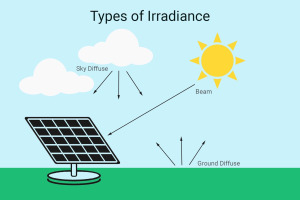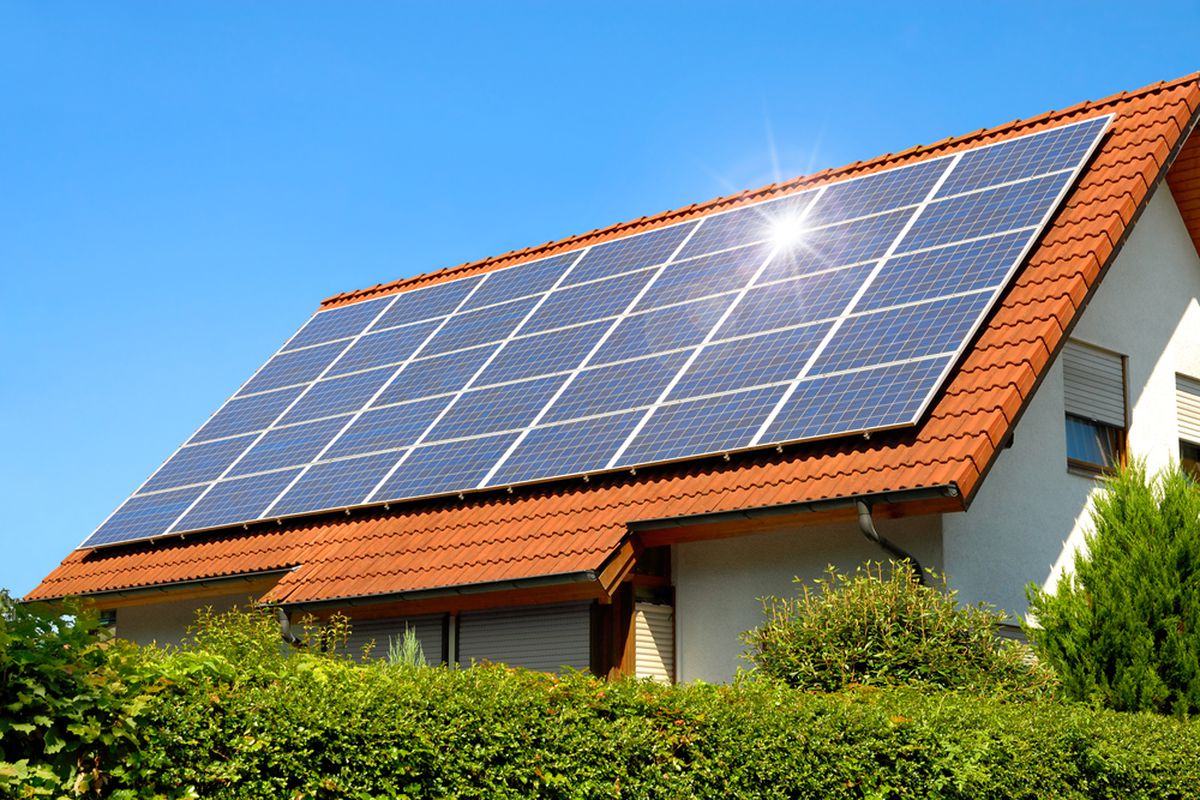Energy Transition: Understanding basics of solar energy and why it has failed to peak in East Africa
East Africa has abundant hot sunshine around the year yet harvesting this for large utility scale electricity has remained small. Partially, it is because the technical aspects of solar power make it a complicated energy source system than it may appear. Understanding is important in helping to shape policy and accelerated solarisation.
By Moses Kulaba, Governance and Economic Policy Center
@energy transition @solarenergy @solarafrica @energypolicy
Early in March 2024 a heat wave hit South Sudan with temperatures soaring between 41 to 47 degrees Celsius. The temperature and its accompanying heat were too high that the South Sudanese Ministry of Health closed schools, advised the public to stay indoors and drink a lot of water to remain hydrated.
The images of South Sudanese baking eggs under the open sun on the streets of Juba went viral rekindling the debate on the potential of harnessing solar energy to generate power. In a two part articles and policy briefs we discuss the technical aspects of solar power and the policy terrain undermining the utility scale investment levels in East Africa.
East Africa has abundant hot sunshine around the year yet harvesting this for large utility scale electricity has remained small. With about 50 MW generation, the Garissa Solar Plant is the largest grid connected solar power plant in East & Central Africa.
So far Egypt has the largest solar park in Africa. It spans 37 kilometers and has a total generation capacity of around 1.8 gigawatts, which is enough to power hundreds of thousands of homes and towns. The question is therefore asked why have we not seen large uptake of utility scale solar projects in East Africa? The answer zeros down to technology, political will and mindset.
The technical aspects of solar power make it a complicated energy source system than it may appear. The mechanics behind solar power and how it can be harnessed with impact on a larger scale can/ is more complicated than it may appear. Harnessing solar for electricity generation requires technical expertise, political will and investment. This brief dissects the basics of solar power and its potentials as a Peaker clean power source for East Africa.
What is solar power
According to scientists, solar energy comes from nuclear reactions which happen deep in the sun’s core. The sun is a giant hot glowing mass of hydrogen and helium at the center of our solar system.
Every second the sun burns and loses about 4 million tons of mass in a continuous complex nuclear fusion reaction. That mass when converted into energy is what drives solar energy outwards from the sun radiating into the solar system. Solar energy radiates from the sun as electromagnetic waves of different frequencies and energies which can be trapped and transformed into solar electricity.
The solar panel collects energy from the sun, this energy goes into an inverter, which is a key component of a solar PV installation. The inverter converts the steady electric power coming into the inverter into alternating current (AC) which is the predominant form of power used in an electric grid or connected to a service panel at a house.
Role of solar in global power systems
Globally the role of solar is still small although it has been increasing over the years. Solar power contributes about 10% of all renewable energy and 1% of total world energy. Bioenergy, hydro power and wind contribute the bulk (90%) of the total renewable energy of about 900 Mtoe, accounting for 10.5% of total energy use. Solar photovoltaic and solar thermal provide 5% each of renewable energy. These statistics are growing as the world constantly moves towards clean energy solutions by 2030.
According to Renewable Capacity Statistics 2024 report released by the International Renewable Energy Agency (IRENA) shows that 2023 set a new record in renewables deployment in the power sector by reaching a total capacity of 3, 870 Gigawatts (GW) globally.
With solar energy continuing to dominate renewable generation capacity expansion, the report underscores that the growth disparity did not only affect geographical distribution but also the deployment of technologies. Solar accounted for 73% of the renewable growth last year, reaching 1 419 GW, followed by wind power with 24% share of renewable expansion.
Renewables accounted for 86% of capacity additions; however, this growth is unevenly distributed across the world, indicating a trend far from the tripling renewable power target by 2030.
The 473 GW of renewables expansion was led once again by Asia with a 69% share (326 GW). This growth was driven by China, whose capacity increased by 63%, reaching 297.6 GW. This reflects a glaring gap with other regions, leaving a vast majority of developing countries behind, despite massive economic and development needs. Even though Africa has seen some growth, it paled in comparison with an increase of 4.6%, reaching a total capacity of 62 GW. Clearly, the room for solar as a new form of energy is still available.
Determinants of solar power and characteristics
The amount of solar received on the earth is determined by a number of factors such as what is technically called irradiance and irradiation. Solar Irradiance is the term generally used to measure the solar flax at a given location and is usually quoted in units of Watts per square meter. Solar Irradiation is used to measure the long-term average solar flax at a given location and usually quoted in Kwh per square meter.
This can further be categorized as Direct Normal Irradiation (DNI) which is the solar power measured at the surface of the earth at a given location with a surface element perpendicular to the sun’s rays. Diffused Horizontal Irradiance/irradiation (DHI) measuring the radiation at the earth’s surface from light scattered by the atmosphere and Global Horizontal Irradiation (GHI) which is the total irradiance from the sun measured at the earth surface on a horizontal plane.
 Africa is often considered and referred to as the “Sun continent” or the continent where the Sun’s influence is the greatest. According to the “World Sunshine Map”, Africa receives many more hours of bright sunshine during the course of the year than any other continent of the Earth and many of the sunniest places on the planet lie here. This has also been. recognized by the international council of science who confidently pointed out that Africa has the best resources when it comes to solar power availability. This resource is usually measured in form of solar irradiance.
Africa is often considered and referred to as the “Sun continent” or the continent where the Sun’s influence is the greatest. According to the “World Sunshine Map”, Africa receives many more hours of bright sunshine during the course of the year than any other continent of the Earth and many of the sunniest places on the planet lie here. This has also been. recognized by the international council of science who confidently pointed out that Africa has the best resources when it comes to solar power availability. This resource is usually measured in form of solar irradiance.
The amount of solar irradiation and irradiance are further determined by factors such as
- Geographical location and proximity to the equator, whereby close proximity to the equator provides short distance to the sun with the sun rays having a direct strike to the earth’s surface and therefore higher temperatures optimal for solar energy.
- Elevation above, where by the higher you go, the more exposure to sunlight and amount of sunshine received
- Seasonality of weather, cloud cover and precipitation, which determine how much sunshine is recorded at a given location.
Strategically located along the equator, East Africa receives between 500-3500 hours of sunshine per year, therefore making it a perfect site for harnessing solar energy throughout the year.
Trends of Solar installations and future of utility scale solar power
Solar Photo Voltaic (PV) installations have been increasing beyond expected projections, however the rate is still too low to pace the required demand. The costs of solar PVs have been dropping constantly by around 20% for every doubling of cumulative shipped volume. At the present rates the costs could have about every 10 years.
Solar panels are made from semi-conductor materials which conduct photovoltaic cells through a complex process of doping and bonding as energy moves through different bands to release electricity. This harnessed for domestic use or as Concentrated Solar Power (CSP) for Utility scale electricity generation. According to statistics CSP is expected to grow by nearly 90% over the next 5 years and nearly tripling the rate of the past 5 years.
Solar and Socio-economic effects
Utility scale solar projects require large tracts of land to set up. For example, the 1,547 MW China Great Wall Project in the Tegger Desert occupies 1200 square kilometers of land with an installed solar field of 43 square kilometers. The US Star 1 and 2 project sits on a large piece of land with1,720,000 panels field generating 1,664 MW enough to power 255,000 homes. This requirement for size to pave way for their establishments, can lead to land grabbing, mass evictions and displacements escalating socio-economic conflicts between the local residents and the investors. East Africa is already awash with land-based conflicts, displacement from ancestral lands and unfair compensation of victims.
Solar and the environment
Because of its low penetration, the environmental impacts of solar energy are still minimal. These could increase as the uptake expands however the following can be noted
- Land use and eco system. Solar farms at utility scale electricity generation requires large areas of land and this can cause disturbances to the land vegetation and sensitive eco-systems. The thousands of solar panels spread across hundreds of square meters can be an eye sore and environmental nuisance
- Impacts on birds (avian): Solar can have adverse impacts to birds through distraction inflight eye sights and incineration. According to a study by the USGs estimated that its Ivanpah CSP plant in Nevada was incinerating about 6000 birds per year. Globally it was estimated that between 40,000 to 140,000 birds died due to large utility scale solar projects.
- Toxic materials used; Solar panels are produced using toxic materials such as silicon which reacts and decomposes to produce tetrachloride, a toxic substance must be well disposed as an industrial waste.
Generally, solar is not carbon free based on a 30-year life cycle analysis but has a very low carbon foot print. This carbon foot print could increase as solar penetration expands matching the global drive towards a clean energy future. However, for now it remains one of cleanest source of energy.
Please read our next article on Tanzania and EAC’s potential and the policy terrain and regulation

